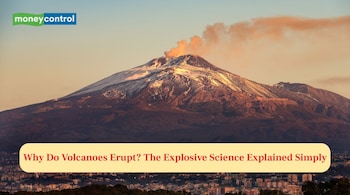One of the most dramatic events on earth is volcanoes. But why then are they suddenly to burst open and pour lava, ash and gas? The answer lies somewhere deep in our planet.
Magma: The Molten Engine
Volcanoes are found when the molten rock or magma emanates through the crust of the earth. The magma is below in the density of the underlying solid rock and therefore, it forces up by use of cracks and areas of weakness in the crust due to which it concentrates in magma chambers under the surface.
The Push Comes Underground
When magma is accumulated, gases like water vapour, carbon dioxide and sulphur dioxide trap up. With time, there is a buildup of pressure in the chamber like the shaking of a carbonated beverage. There is a pressure throughout which the overlying rock is stronger when compared to the pressure, the pressure pushes its way to the surface resulting in an eruption.
Types of Eruptions
There is nothing like all eruptions. Soft lava flows take place when magma is lacking in gas and silica thus forming shield volcanoes, such as ones found in Hawaii. On the other hand, explosive eruptions occur when the magma is thick and gas rich forming ash clouds and pyro-clastic flows as seen in Mount St Helens.
The Role of Plate Tectonics
A majority of the volcanoes are located along boundaries of tectonic plates where either plates are diverged, converged or sliding past each other. The subduction zones, where one plate slides and a sub-plate slide underneath the first plate usually produce some of the most devastating eruptions, caused by pressure and the viscosity of the magma.
Learning about the volcano eruptions assists scientists in anticipating the volcanic activity and avoid hazards as well as gain a better insight into the dynamic interior of the earth.
Discover the latest Business News, Sensex, and Nifty updates. Obtain Personal Finance insights, tax queries, and expert opinions on Moneycontrol or download the Moneycontrol App to stay updated!









